Introducing ESCAPE by Iskra Velitchkova
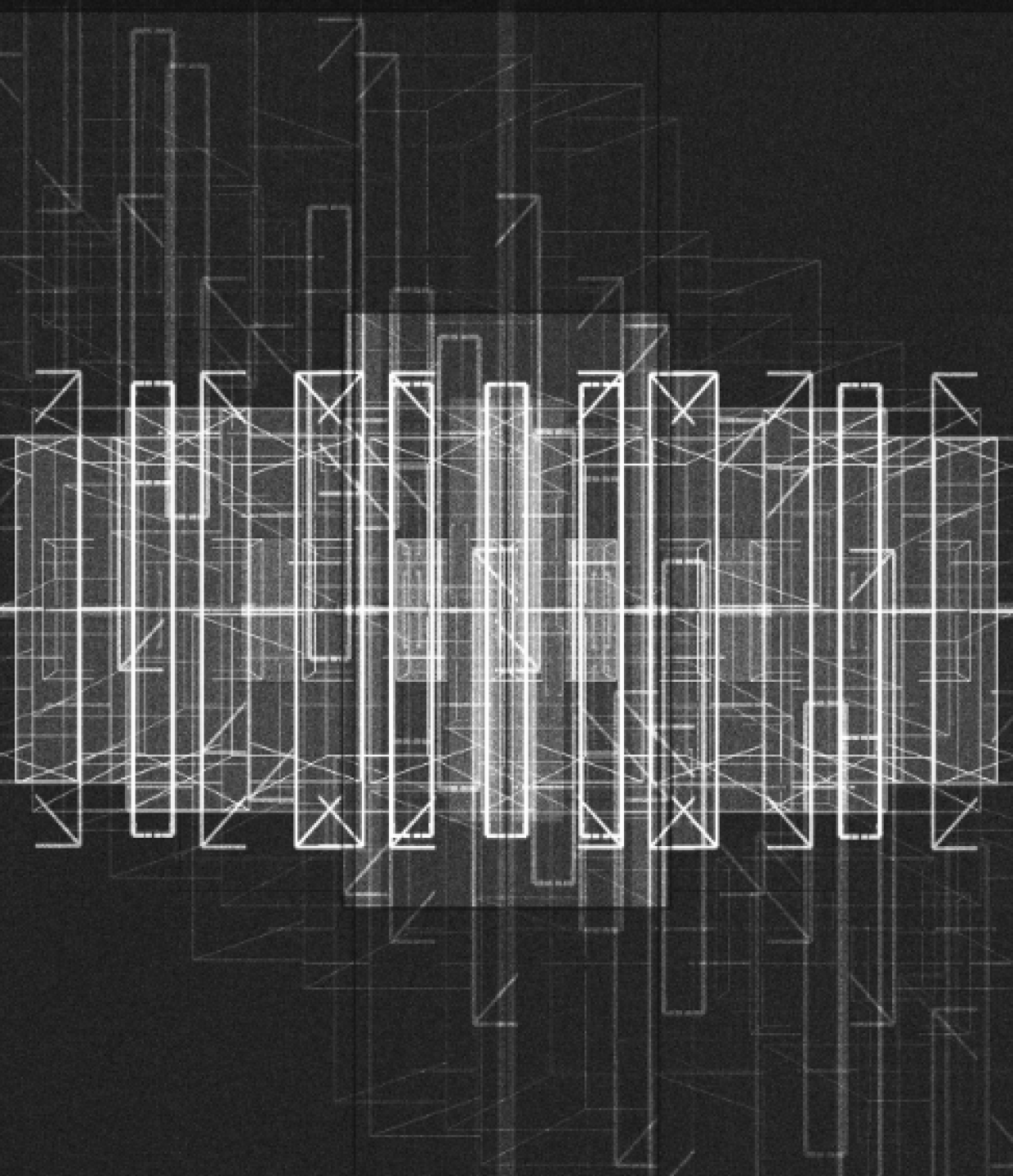
ESCAPE by Iskra Velitchkova is at once an archive of the artist’s personal history and a self-referential exploration of how we seek freedom and escape in art.
ESCAPE, the latest collection by Iskra Velitchkova, is at once an archive of the artist’s personal history and a self-referential exploration of how we seek freedom and escape in art.
Iskra Velitchkova entered 2023 with a clear goal — to slow down. After two frenetic years she needed to take a step back and focus on developing her technique and art practice. ESCAPE is the product of this pace change, its icon, and a map guiding us towards this same freedom.
Compositional Discovery
For Velitchkova, the relationship between artist and machine is deeply collaborative, nurturing unexpected elements that emerge from the code. This collection began in an exploration of systems that balanced order and chaos on a months-long trip away from the patterns of home. With new found space and distance came complete freedom for creative exploration.
A distinctive aesthetic emerged in one of these systems, the illusion of an architectural map. Still retaining her signature minimalism, this body of work incorporated chaos in a reduced black and white palette. Velitchkova created depth in the lines, almost the feeling of pencil marks, through their granular construction. Playing with shadows and repetition, a new world of tones emerge within the black and white images.
In this layered image the artist recognized the gloomy, nondescript and at the same time feral, caustic architecture of former soviet cities. Immediately familiar to the artist who was born in Bulgaria. Her memories take root in the collection. Beautiful and poignant in the nostalgia they evoke.
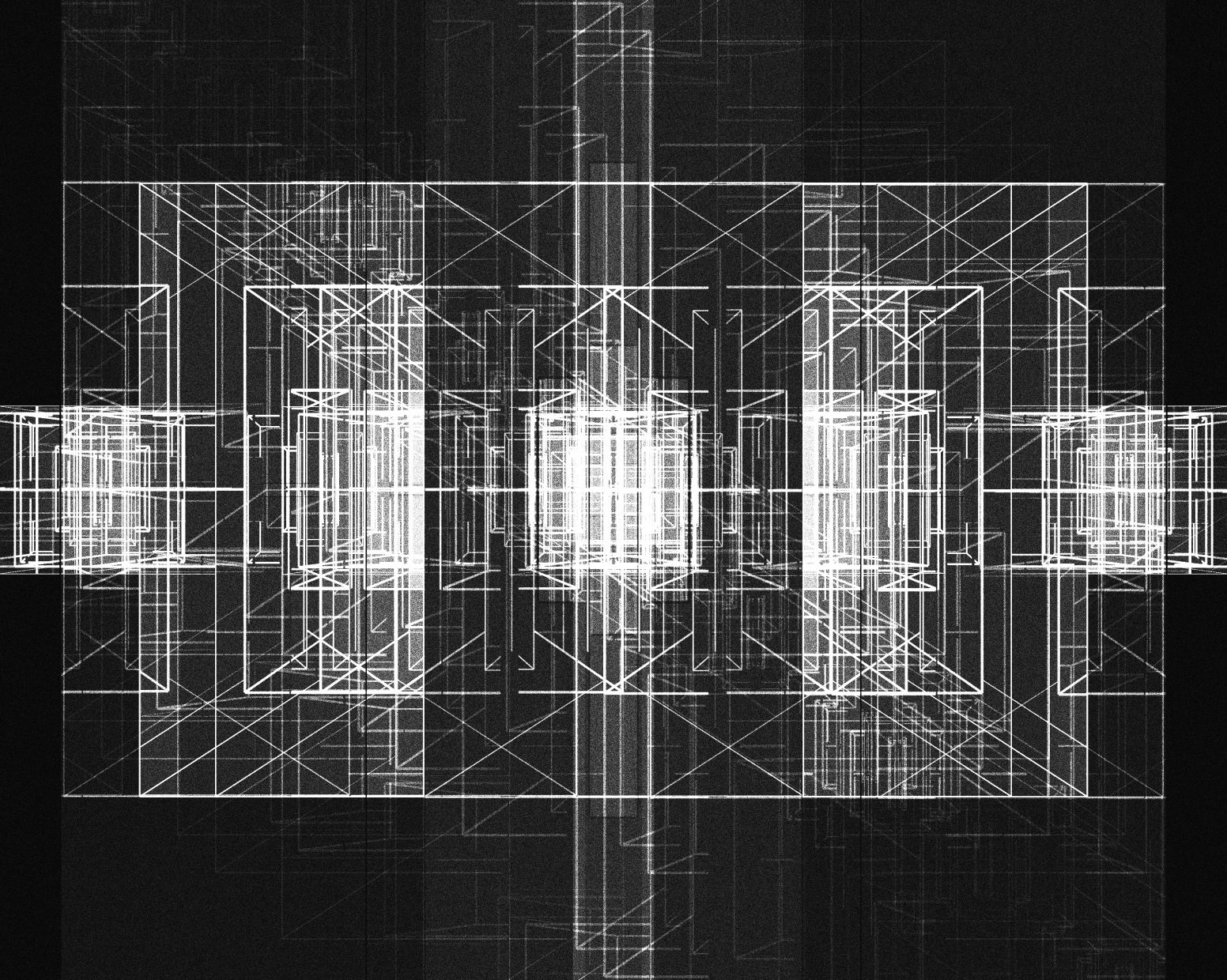
Escape #238 by Iskra Velitchkova, 2023
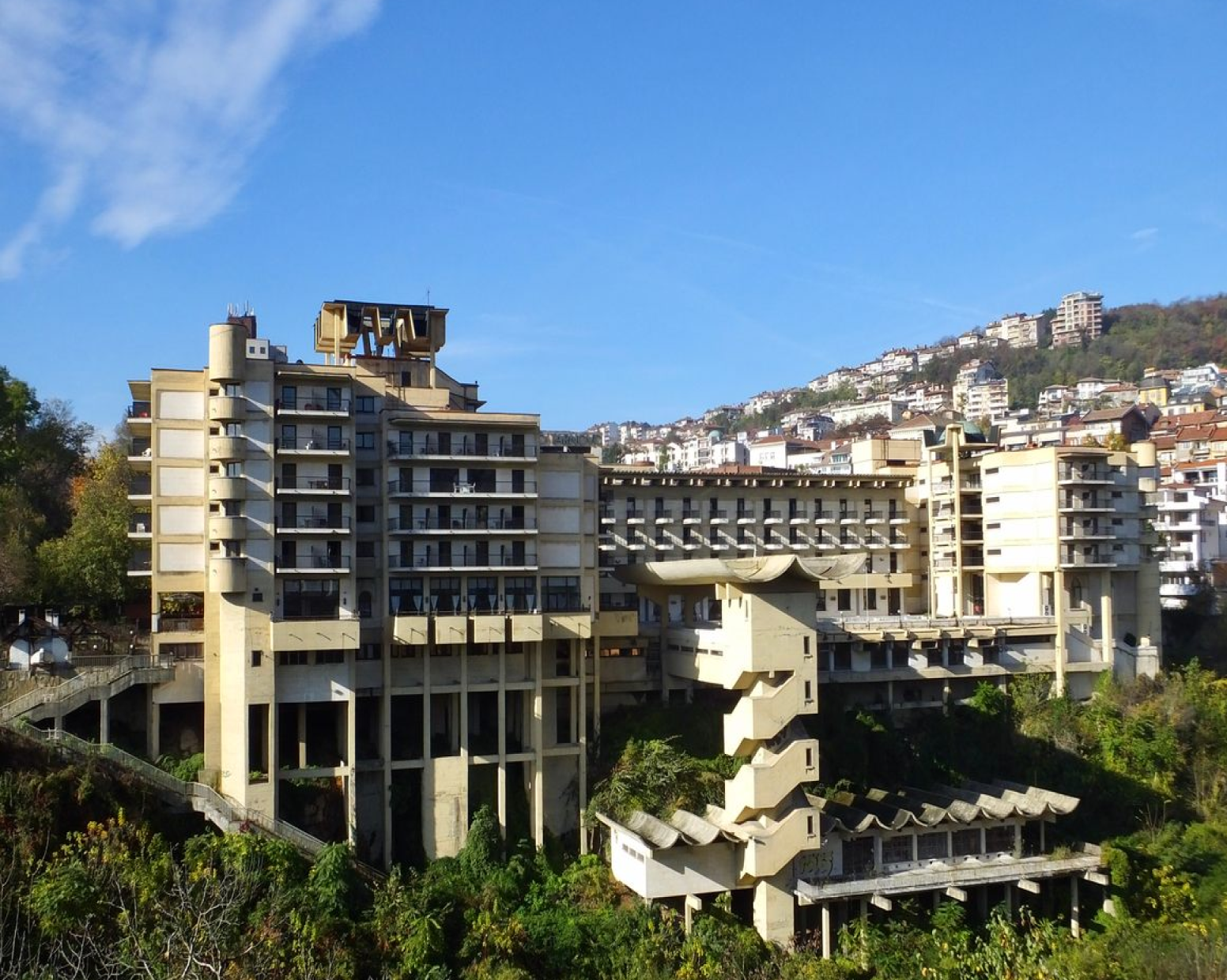
Interhotel Veliko Tarnovo in Veliko Tarnovo, Bulgaria
Velitchkova decides to push this austere landscape further, breaking the standard cube, introducing new shapes, and looking for deeper resonance. Through this process of destruction a new form emerged, the cylindrical ghost of an opera house. Immediately recognizable to the artist who has increasingly found inspiration and diversion in the rounded halls of the opera house. Familiar to the artist who has long found inspiration in music and increasingly in opera.
Simulacrum of Vision
Velitchkova foregrounds the search for escape with layered symbolism that taps into two separate but related veins of semiotics. The first is the use of the opera house as icon, echoing the interior organization in the multi-faceted cylinder that appears frequently in the collection. This is a marked break with standard symbol systems. By elevating the internal space as the iconographic form, the artist evokes the experience of viewing the performance instead of the external form of the opera house.
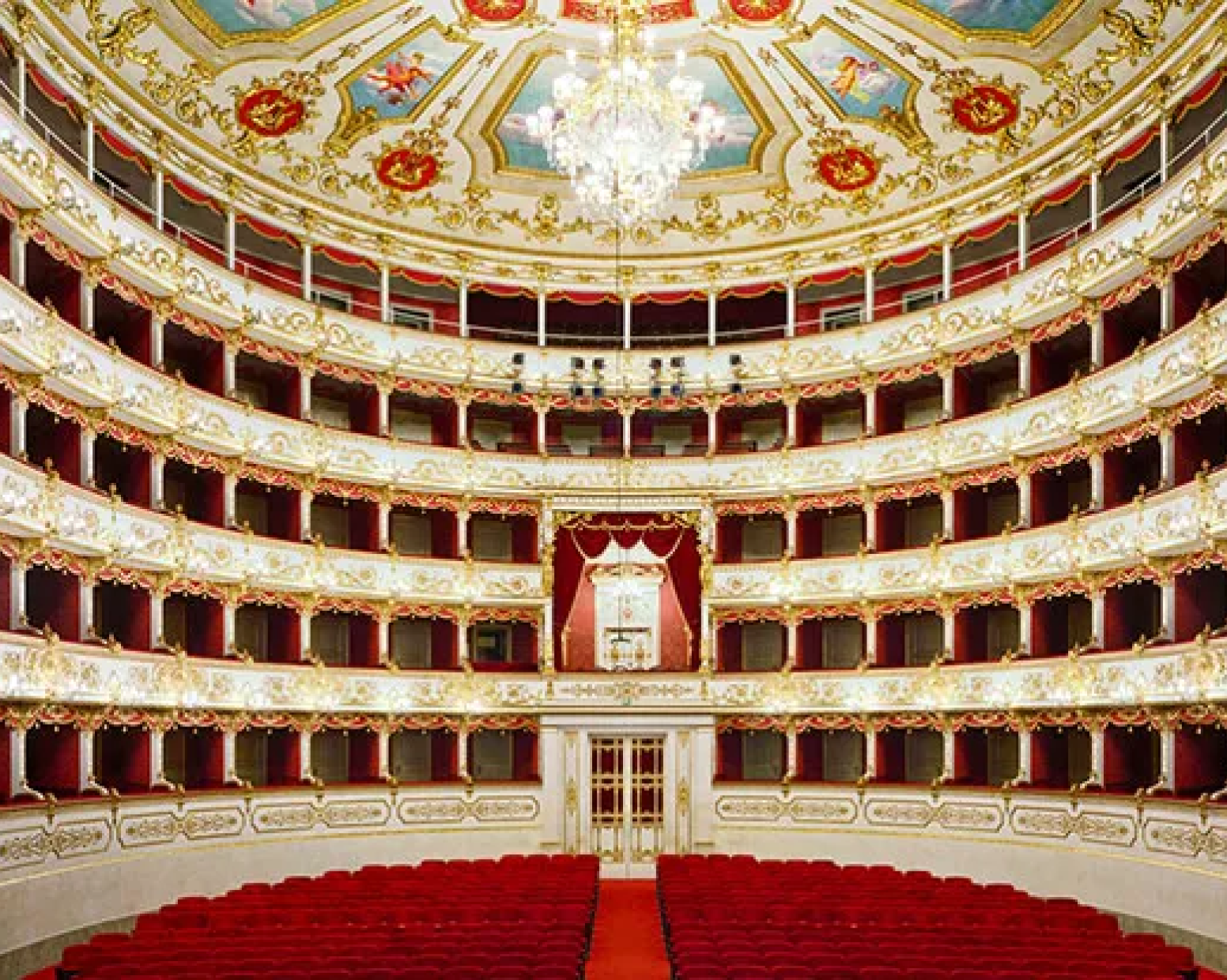
Italian opera house Teatro Municipale Valli, photographed by David Leventi
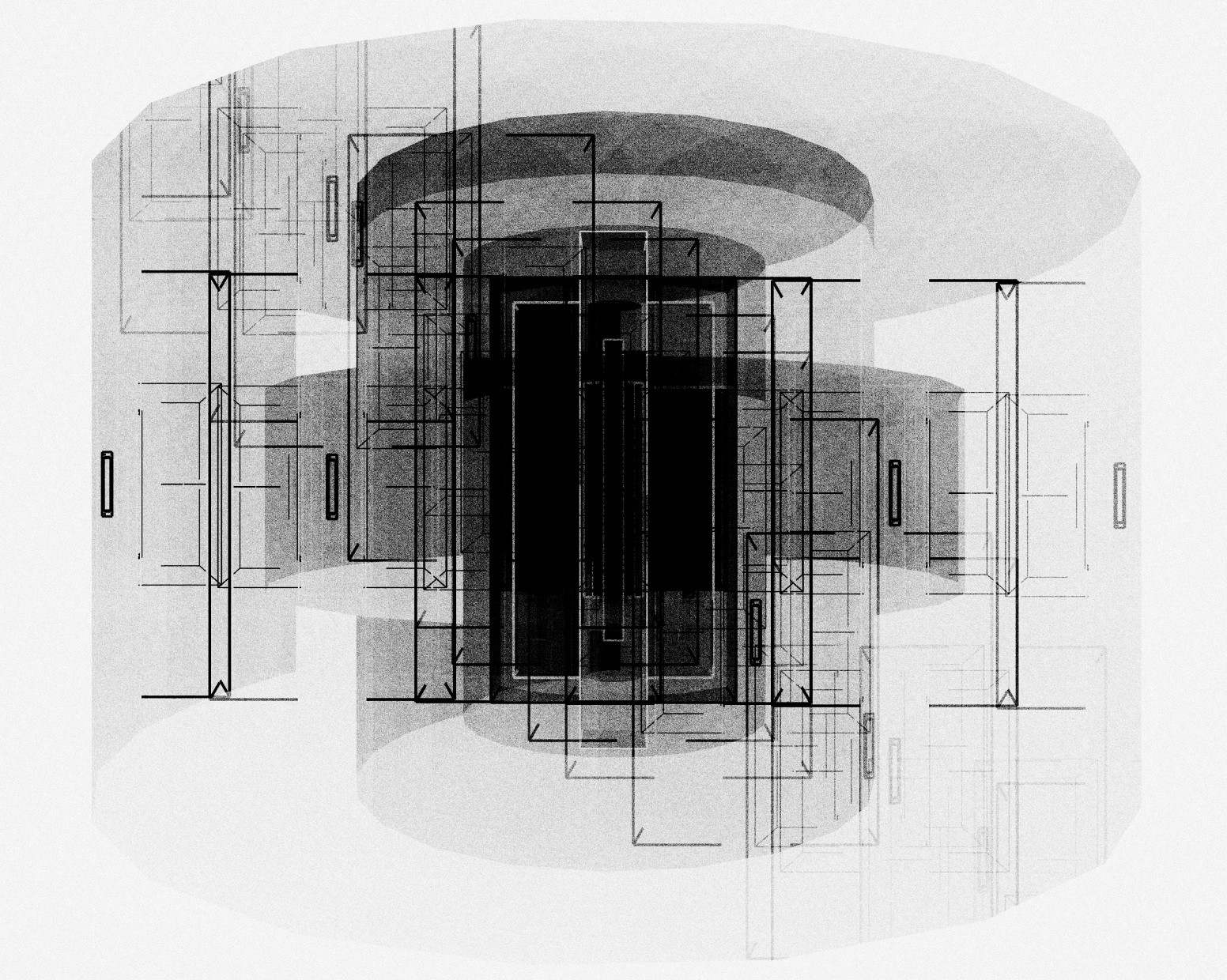
ESCAPE #140 by Isrka Velitchkova, 2023
The second semiotic layer pushes this exploration further by creating an index of how viewing art and the opera impacts the audience. Skeletal architectures are overlaid and repeated in fans of intersecting lines. This creates a busy schematic that seems familiar and lets the eye follow the mess of unreal structures, tracing lines and shapes, attempting to make sense of the forms. In some the picture plane is rotated and layered, reinforcing that these are fictitious structures. Complete understanding remains elusive as the forms are otherworldly and defy three dimensionality.
By avoiding easy categorization, the viewer spends longer considering the forms and making sense of the picture plane. It becomes possible to escape everyday concerns for a moment longer, lost in the almost mathematical task of viewing these geometries. The opera house icon emerges as an antidote to these illusive structures. This central figure is instantly recognizable as a flat or three dimensional shape. Whether in dense black or highlighted as a central white figure, it is a condensation point. A place for our mind to rest.
These compositions therefore serve as both a visual index of the most optimistic outcome of viewing art and as a functional guide to best practice. Velitchkova has created a picture plane designed to arrest and provide that meditative escape and serve as a self-referential poem to the power of art.
We are reminded of what art can offer us — mental freedom. Yet ultimately this is an illusion. Just as the opera is a staged fiction with its own rules and schedule, this composition is not real, it is a staged performance specifically created to evoke this reaction.
While the artist may see echoes of her birthplace and the icon of freedom, each viewer will have their own internal monologue that remains secret and deeply personal. We are invited to lose ourselves in the geometry and find our own narrative in this performance.
Architectural Portraiture
In ESCAPE architectural structures are taken out of place and time, isolated in the frame and enlarged. We see echoes of Bernd and Hilla Becher’s celebrated photography where they elevated post-industrial structures in closely cropped photographs with consistent framing to create families of objects across space and time. They took familiar forms such as the water tower, and freed them from their surroundings to allow comparison and the creation of a visual language. Now the viewer could examine the structure and find similarities and differences within the related forms.
Water Towers, Bernd and Hilla Becher, 1965-1997
Velitchkova implements similar repetition in her algorithmic structures. We see a form emerge and repeat in multiple works that is centrally framed and taken out of context. Each structure can be viewed in isolation yet when viewed as a collection you can learn more from each in comparison to the others. New details become obvious when compared to other related yet distinct images.
The Disorientation of Weight
Weight is a value for me — not that it is any more compelling than lightness, but I simply know more about weight than about lightness and therefore I have more to say about it, more to say about the balancing of weight, the diminishing of weight, the addition and subtraction of weight, the concentration of weight, the rigging of weight, the propping of weight, the placement of weight, the locking of weight, the psychological effects of weight, the disorientation of weight, the disequilibrium of weight, the rotation of weight, the movement of weight, the directionality of weight, the shape of weight.
— Richard Serra
In ESCAPE, Velitchkova abandons her well known exuberant color palette in favor of minimalist black and white. Within this seemingly rigid binary she is able to play with weight and light, creating compositions that jump between weighted black and white that becomes almost blinding in comparison. Without color, the viewer is left with a blend of fully formed structures and skeletal architectures in chiaroscuro, finding new gravity and detail in the subtle palette.
In this dense black we find echoes of Richard Serra’s work, the great master of weight. In his drawing practice he uses paint-stick, charcoal, and other substrates to create black compositions on a light page that push the boundaries of drawing and how we experience it. The flat black form is so dense that it almost has its own gravitational pull. Despite more graphic details on the edges that serve as an archive of the production process, the eye is drawn to the central dark form. We look for texture and nuance.
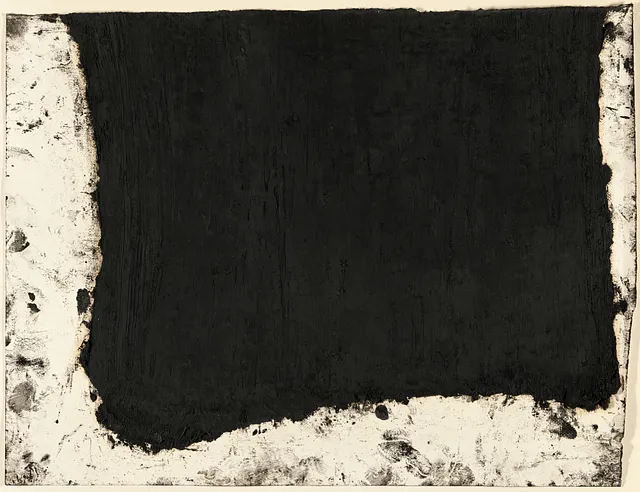
Drawings, Richard Serra
Similarly within ESCAPE our eyes are drawn to the densest part of the composition. We look there, pulled by this same gravitational force.
Chiaroscuro and the Influence of Analog Photography
Velitchkova’s long-time experience with analog photography comes out in full force in this collection. Double exposure is a technique where two images are captured in a single frame and combined to form one image.
This technique has been popular for over a century, notably in the work of the great Dada artist László Moholy-Nagy. He layered everyday objects and easily recognizable shapes to create surrealist photograms.
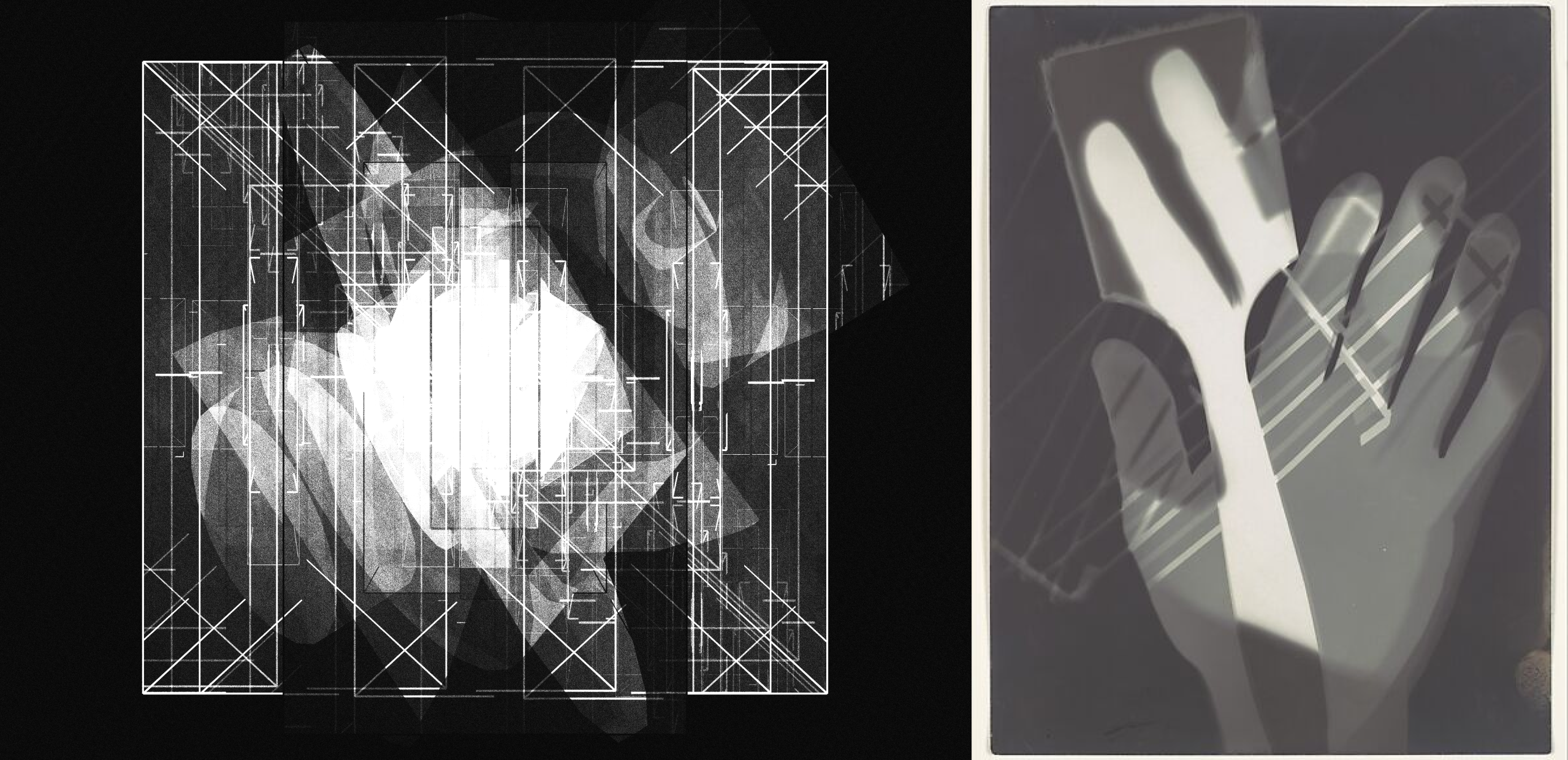
Left: ESCAPE #318 by Iskra Velitchkova, 2023 and Right: Fotogramm, László Moholy-Nagy, 1926
Iskra employs the familiar aesthetics of double exposure but instead of using film roles she layers algorithmically created structures and shaders. This evolution in technique gives homage to the earlier analog process while pushing it further than would be possible with film alone. Otherworldly structures and icons emerge and blend together, adding depth and interest to the picture field.
In some works the icon of a camera lens emerges, further reference to the influence of analog photography. In a camera this symbol would only appear once and be a tool, here it is abstracted and repeated. Reminding us that this process is not photographic, despite the stylistic connection.
To learn more about acquiring a work from ESCAPE, please view the collection at tonic.xyz.
More stories
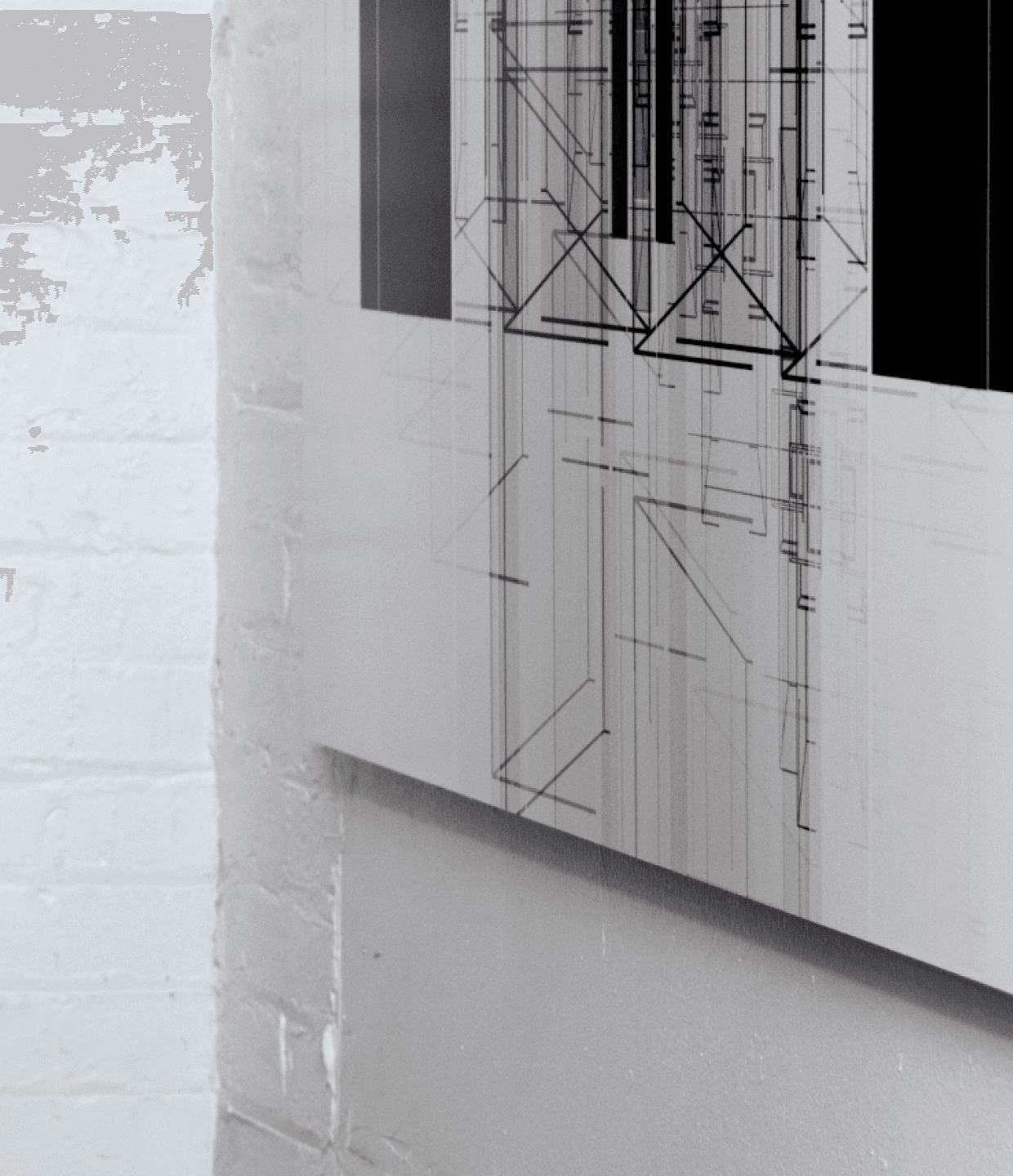
Unique Physicals, Series, ESCAPE
Iskra Velitchkova’s ESCAPE with Silver Gelatin Printing
Iskra Velitchkova’s ESCAPE is influenced by analog photography and leverages silver gelatin to its fullest for its unique physical offering.
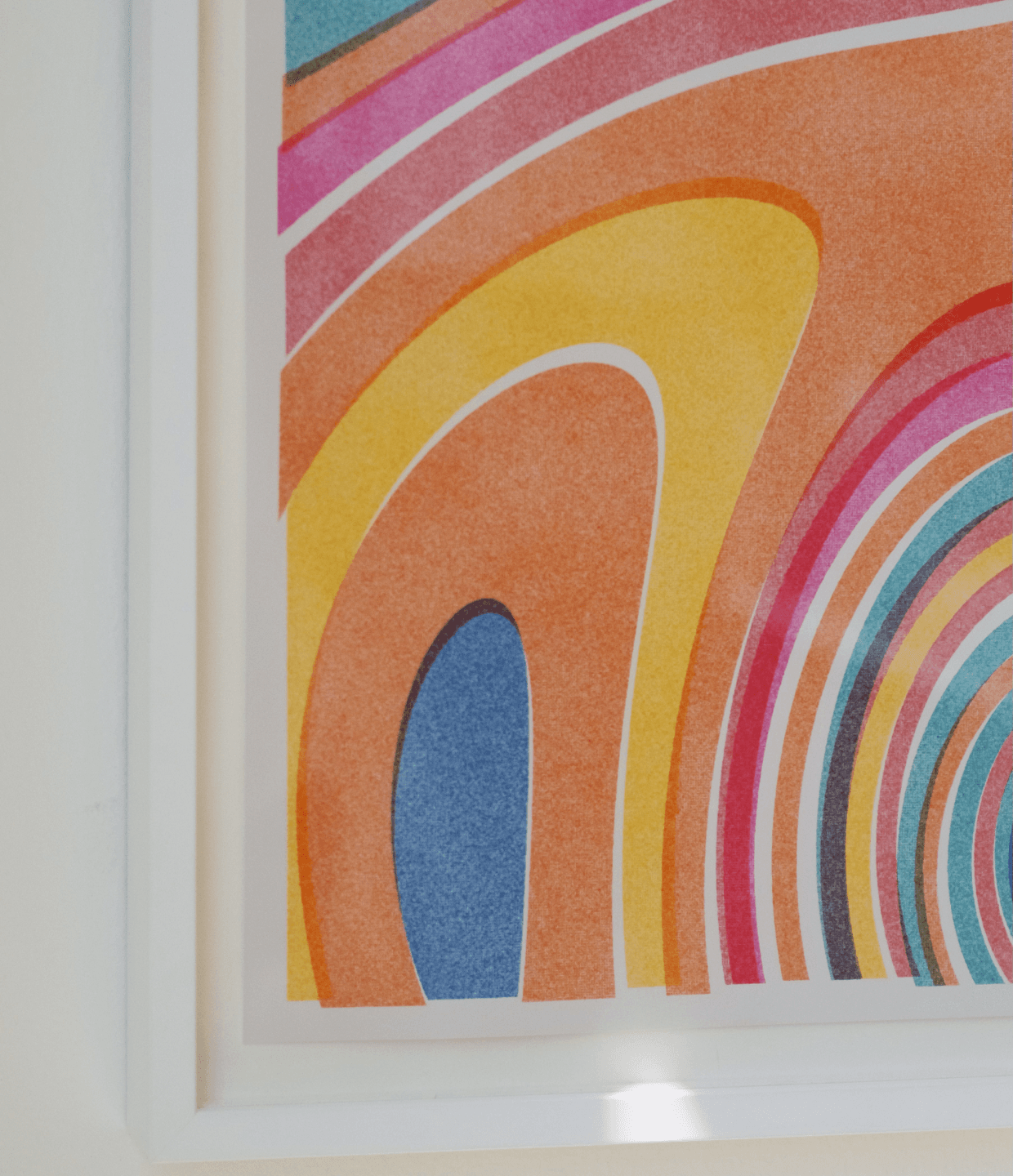
Features, Series, Compare & Contrast
Pointilism & Divisionism in Intimità and Interference
The experiments of Divisionist and Pointillist painters influenced our understanding of color and contrast, enabling new forms of artistic impression like the works of Phaust and Stefano Contiero.
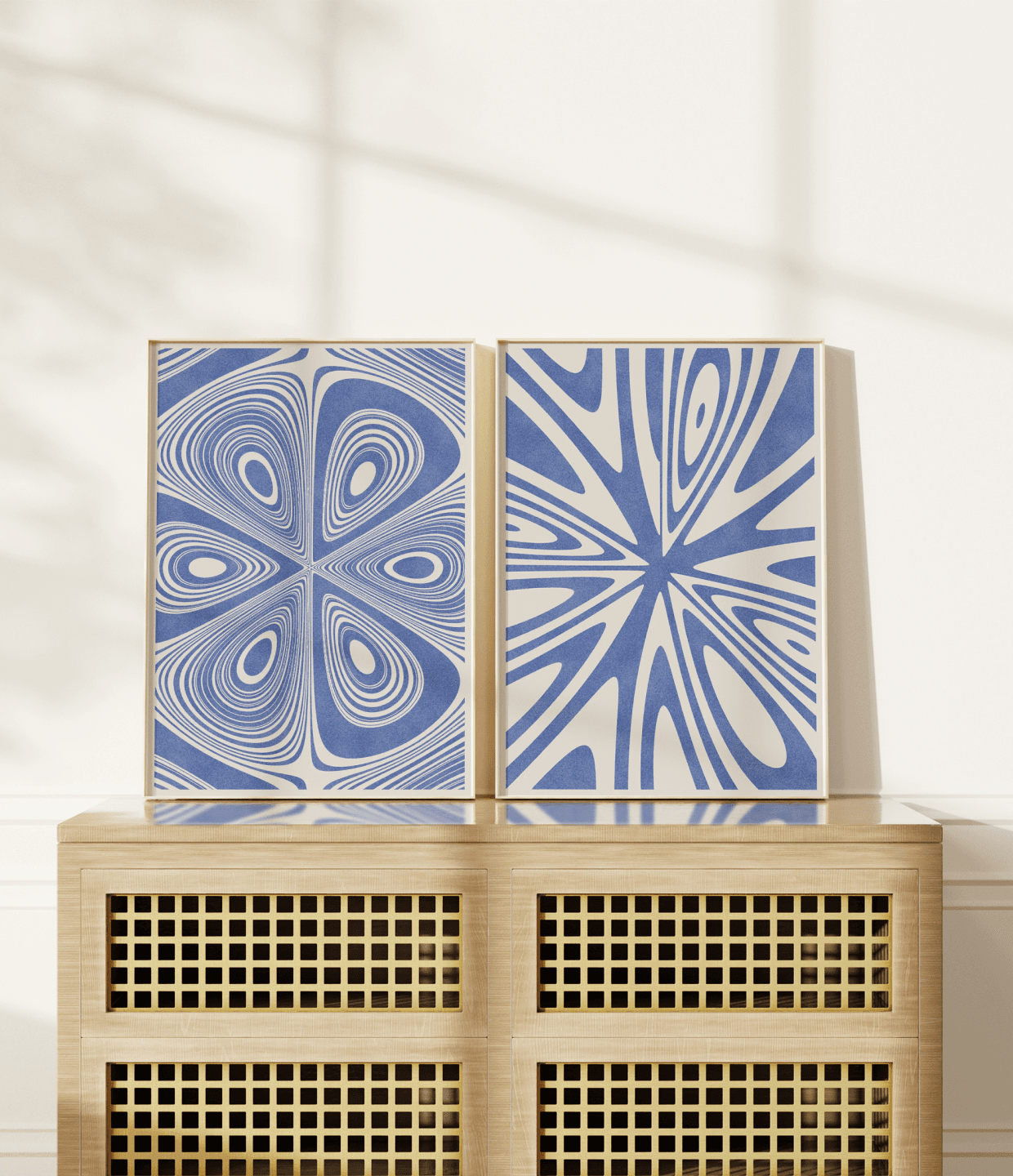
Features, Series, Interference
The Making of a Generative Art Algorithm: Phaust’s Interference
Each work in Interference is generated algorithmically through a series of transformations that elevate Chaldni patterns and risograph printing.


Stay in the loop on upcoming drops, exclusive access, and more.